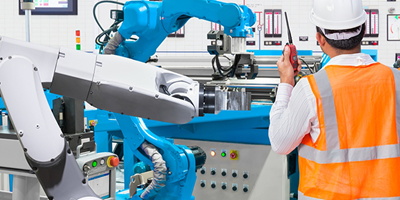As technology continues to advance, automation and robotics are playing an increasingly significant role in various industries, from agriculture to manufacturing and even the fast-food sector. Innovators like Sara and Brian Jennings are developing solutions to make autonomous machines are safer and more efficient, while companies like FANUC America Corp. and Miso Robotics Inc. are making it easier for businesses to adopt robotic systems.

Revolutionizing Agriculture with Autonomous Robots
In Nunn, Colorado, Sara, and Brian Jennings are working on a project to create autonomous agriculture robots. Using a homemade platform with cameras and sensors, they gather data at a high rate to develop a prototype that will attach to agriculture robots, making them safer and more effective. This technology aims to help farmers maintain uptime on their machines and address the labor shortage in agriculture. With a $250,000 grant from the state, the team hopes to have the prototype ready by the end of April and out to market by 2024.

Addressing the Manufacturing Skills Gap with Automation
The United States manufacturing industry is facing a skills gap due to offshoring and societal attitudes toward trade. A 2021 study predicts 2.1 million unfilled manufacturing jobs in the U.S. by the end of the decade, potentially costing the economy $1 trillion in 2030 alone. Automation can help manufacturers augment human workers and increase productivity. FANUC America Corp. aims to make robot implementation faster and easier with Quick & Simple Startup of Robotization (QSSR), reducing the installation process from one day or more to just a few hours.

Robots in the Fast Food Industry
Fast food companies are also looking at automation to improve efficiency in their kitchens. Miso Robotics Inc. has developed the Flippy2 frying system, a robotic solution for automating tasks such as part washing and deburring, assembly and inspection, and painting and packaging. The Flippy2 is available for reservation at $3,000 per month, offering a cost-effective way for fast-food businesses to streamline their operations and reduce reliance on human labor.

Embracing the Future of Work
As automation and robotics continue to shape the job market, businesses and industries must adapt to these technological advancements. By embracing these innovations, companies can address labor shortages, increase efficiency, and remain competitive in an ever-evolving global economy.